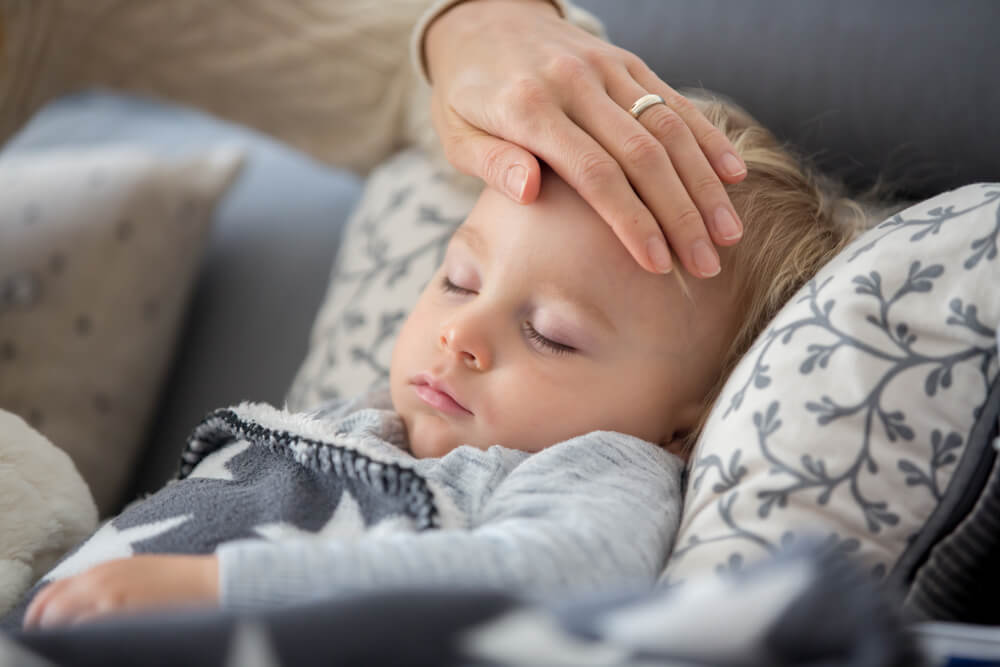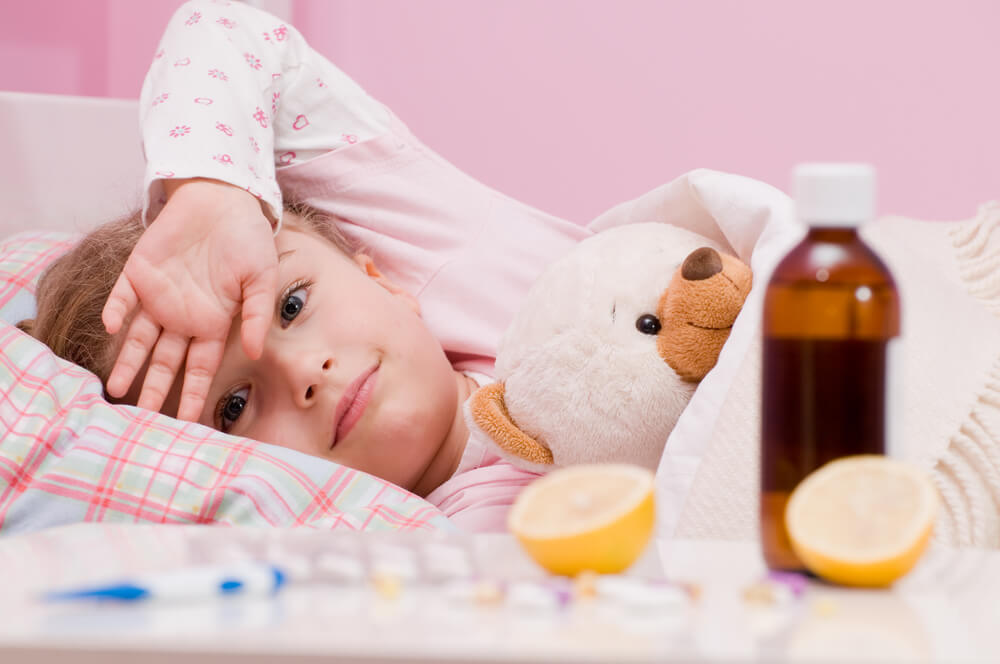If your child has just started coughing, sneezing, and complaining that he or she has a sore throat, the most obvious suspect is a cold. Colds affect millions of children throughout the world every year.
Kids have a higher likelihood to develop colds during winter, but fall is when the onslaught normally starts. The bad news is that the average child can have up to eight colds a year. And if he or she attends daycare, expect this number to be even higher. The only bit of good news is that after age six they usually start getting colds less often.
What Causes Children’s Cold And Flu?
Colds (and flu) are caused by a virus. There are over 200 different types of cold viruses. The majority of colds are, however, caused by the rhinovirus. To get a cold, the child had to of been in close contact with somebody else who was infected with the virus.
These Viruses Mainly Spread in One of the Following Ways:
Through direct contact . That means your kid must have touched an infected child (or adult). Cold viruses spread particularly quickly among children because they are forever touching their mouths, noses, eyes, and each other. The cold virus can also spread through toys and other objects that have been touched by an infected person.
Via the air. If somebody who has a cold coughs or sneezes near your child, tiny parts of the cold virus will typically spread into the surrounding air. If the child breathes in that specific air, the virus will attach o the nasal membranes inside her or his nose.

What Are The Symptoms of Children’s Cold and Flu?
When a child starts getting a cold they will normally first complain about feeling unwell. This could be followed by a cough, runny nose, and sore throat. Initially, the sore throat is caused by mucus buildup. Later it can be exacerbated by a post-nasal drip, with mucus running from the back of the nose into the throat.
As the cold gets worse, the kid might develop the following symptoms:
- Crusty or water eyes
- Nose filled with watery mucus
- Feeling tired
- Sneezing
- Sore throat
- Fever
- Coughing
- The virus might also affect the kid’s throat, sinuses, ears, and bronchial tubes
- Children sometimes also start vomiting and/or develop diarrhea
How Long Do Colds Last In Children?
The next time your child asks you how long do colds usually last, tell him or her that cold symptoms typically start appearing 2 to 3 days after one has been exposed to the virus. The majority of colds will go away within 7 days, but it may take a bit longer. If the child, however, clearly finds it hard to shake off the cold it’s best to take him or her to a doctor or pediatrician. A pediatrician will also be a good choice if the symptoms are unusually severe.
Common Cold Stages
Below are the 5 most common cold stages:
1 . Onset. It takes more or less one to three days after a child has connected with the virus before he or she will start showing symptoms. No matter how busy you are, don’t ignore these. Make sure the child stays well hydrated and gets enough rest.
- Progression. This is when the cold starts settling in. Congestion and coughing are common during this stage. This is the time for lip balm, soft tissues, cough drops, honey, tea, and hot soup. And if the child gets unusually serious symptoms, take him or her to a doctor or pediatrician just to be safe.
- Peak. The cold is now in full swing. This is when you will often ask yourself: How long do colds last in children? – because it will feel like it never ends. The child might have a low-grade fever and an aching body. Double up on broth, water, and juices so they stay hydrated. Consider buying a decongestant at your local pharmacy. But again: if he or she displays unusually severe symptoms, a visit to the doctor or pediatrics specialist might be the best option.
- Remission . Among the common cold stages, this is probably the one both parents and kids are looking forward to the most. The fever breaks, the body aches start going away and the patient has turned the corner toward recovery. This is a good time to throw all her or his clothes and bedding into the wash. And to sterilize personal items such as smartphones and toothbrushes.
- Recovery. This is the last stage. Your child has beaten another cold and is back to her or his old tricks. Treat any lingering runny nose or cough with over-the-counter medication and make sure he or she eats a balanced diet while the body is rebooting.

Children’s Cold Medicine: How To Treat a Cold In Children
There isn’t a magic potion that cures all children’s cold and flu. The doctor can’t prescribe antibiotics because they do not work against a disease caused by a virus. How long do colds last in children: Luckily the majority of kids recover from a cold within around 7 days. To help them feel better you can:
- Give them the best children’s cold medicine of all: lots of love and care.
- Let him or her drink lots of fluids, including warm soup, apple juice, electrolyte solutions, and of course water. This prevents dehydration.
- Try a saline nasal spray if his or her nose is congested. They are safe for kids and available without prescription. Note: Don’t confuse these with decongestant nasal sprays.
- Ensure that the patient gets lots of rest
- Use children’s cold medicine to treat symptoms. Before using an over-the-counter product, however, first discuss it with your doctor or pediatrician. Never give OTC cold and cough medications to children below the age of 4 before it has been cleared by a doctor or pediatrician. For kids who are from 4 to 6 years old, you should only give OTC children’s cold medicines that have been cleared by a medical professional.
- Do not give Ibuprofen to any child below the age of 6 months
- Do not give aspirin to your child unless it was approved by a healthcare provider. It might trigger a condition known as Reye syndrome. Although this is rare, it is also serious.
- Make sure the child is not exposed to tobacco smoke. this will cause even more irritation in the throat and nose
- Keep your child away from tobacco smoke. Smoke will make the irritation in the nose and throat worse.
- Place a cool-mist humidifier in their room during the night. This helps to facilitate easier breathing.
When To Call Your Child’s Doctor or Pediatrician
Call a medical professional if the child:
- Develops a fever of over 38°C (100.4°F)
- How long do colds last in children? If he or she has had cold symptoms for more than ten days something more serious might be brewing
- Has symptoms that do not improve after giving him or her over-the-counter medication
The Bottom Line
Colds are very common among children, particularly younger ones. Most of these colds can be treated at home. We think we’ve covered the majority of home treatments above but if you think we’ve missed something, you are welcome to leave a comment below. And if you want to know more about the medical care a child can get from a pediatrics specialist, feel free to browse our website. And bookmark it – you never know when you might need us.



